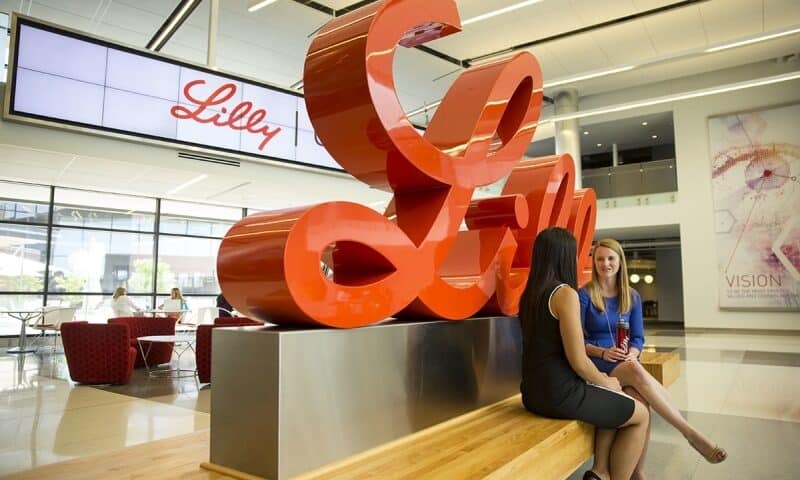Eli Lilly has linked its anti-SARS-CoV-2 antibody to a lower rate of hospitalization in patients recently diagnosed with mild to moderate cases of COVID-19. However, two of the three doses, including the highest studied in the phase 2 trial, failed to beat placebo in terms of reducing viral load by Day 11.
The study, BLAZE-1, assessed the effect of three doses of LY-CoV555 and placebo in 452 patients with mild to moderate COVID-19 symptoms and a positive SARS-CoV-2 test based on a sample taken no more than three days before dosing. Lilly’s primary endpoint looked at the change in viral load from baseline to Day 11.
Only the 2800-mg dose met the primary endpoint. The other two doses—700 mg and 7000 mg—did no better than placebo by that yardstick. Typically, the highest dose of a drug has the biggest effect.
Lilly is yet to share data or statistical analyses for the primary endpoint, making it impossible to get a handle on what it saw in the trial. The mixed primary endpoint data may partly be explained by the fact that most patients in all arms, including the placebo cohort, had nearly complete viral clearance by Day 11.
That suggests the choice of endpoint may be the issue. Lilly said LY-CoV555 improved viral clearance at an earlier time point—Day 3—and fewer patients on the drug had persistently high viral loads later in the trial. Again, the lack of data makes it impossible to assess those potential benefits.
Lilly was more forthcoming with secondary endpoint data. In the LY-CoV555 arm, 1.7% of people were hospitalized or visited the emergency room due to COVID-19, compared to 6% of their peers on placebo. Lilly said the difference corresponds to a 72% risk reduction. The numbers involved are tiny, though. Five of the 302 LY-CoV555 patients went to the hospital, compared to nine of the 150 people on placebo. It is possible that the apparent benefit of LY-CoV555 will evaporate in a larger study.
Other aspects of the data point to the need for more research. Lilly said the rate of hospitalization in people with risk factors suggest “a more pronounced treatment effect” in such patients. Exploratory analyses also suggest the COVID-19 symptoms of patients on LY-CoV555 improved faster than their counterparts on placebo. More work is needed to confirm the findings.
With no patients suffering drug-related serious adverse events, Lilly may be able to seek emergency use authorization on the strength of the clinical data, despite its limitations. Lilly is set to discuss the next steps with global regulators.
BLAZE-1 is continuing, with Lilly amending the phase 2 last month to assess the effect of combining LY-CoV555 with another anti-SARS-CoV-2 antibody, LY-CoV016. Lilly took LY-CoV555, which AbCellera developed from the blood of a COVID-19 survivor, into the clinic as a single agent in part in an effort to maximize the output from its manufacturing capacity.
Lilly continued to consider two-antibody cocktails, though, and is now trialing LY-CoV555 with its Shanghai Junshi Biosciences-partnered LY-CoV016. The two antibodies target different parts of the SARS-CoV-2 spike protein, suggesting the cocktail could be less susceptible to drug resistance.
That could prove to be important. Lilly found variants that may confer resistance to LY-CoV555 in all arms of the trial. The variants were more common in patients treated with LY-CoV555 than people on placebo, although at 8% versus 6%, the difference may just be noise.
The Lilly data drop is the first of a series of readouts on anti-SARS-CoV-2 antibodies. Lilly has other LY-CoV555 trials on the go, and peers including AstraZeneca, GlaxoSmithKline and Regeneron are also testing anti-SARS-CoV-2 antibodies in humans.

